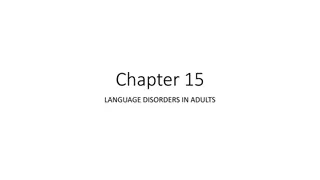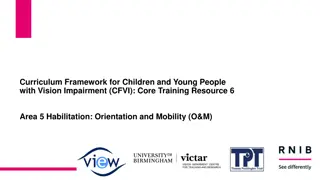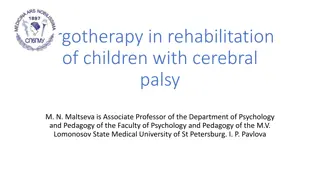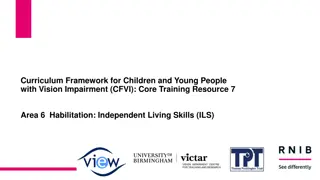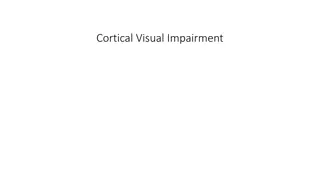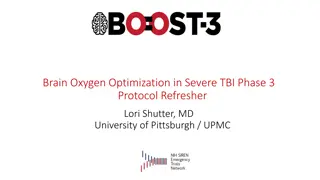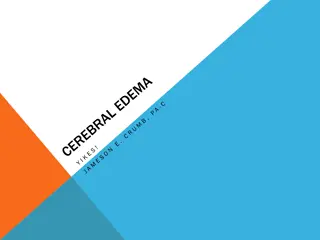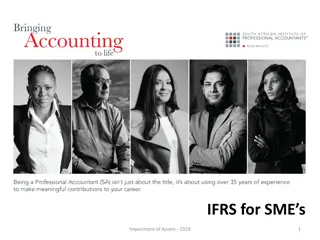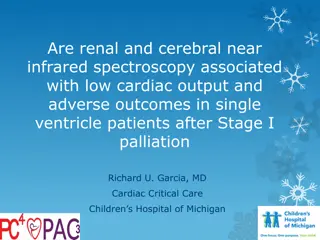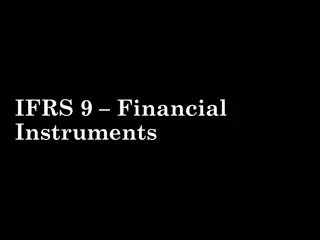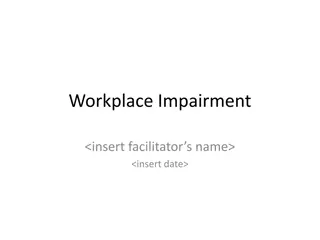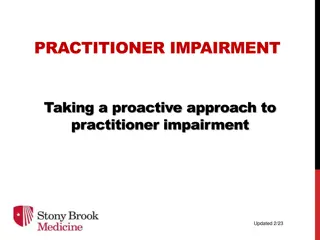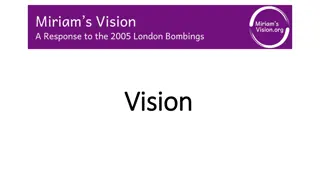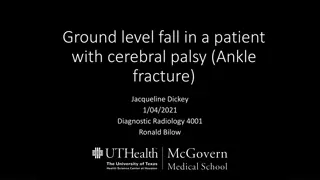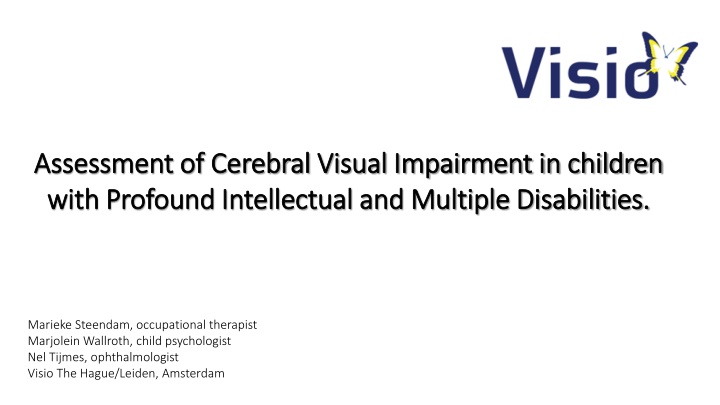
Assessment of Cerebral Visual Impairment in Children with Profound Disabilities
Explore the assessment of cerebral visual impairment in children with profound intellectual and multiple disabilities. Learn about the challenges in assessing visual functioning and the development of visual assessment scales for intervention purposes.
Download Presentation

Please find below an Image/Link to download the presentation.
The content on the website is provided AS IS for your information and personal use only. It may not be sold, licensed, or shared on other websites without obtaining consent from the author. If you encounter any issues during the download, it is possible that the publisher has removed the file from their server.
You are allowed to download the files provided on this website for personal or commercial use, subject to the condition that they are used lawfully. All files are the property of their respective owners.
The content on the website is provided AS IS for your information and personal use only. It may not be sold, licensed, or shared on other websites without obtaining consent from the author.
E N D
Presentation Transcript
Assessment of Cerebral Visual Impairment in children Assessment of Cerebral Visual Impairment in children with Profound Intellectual and Multiple Disabilities. with Profound Intellectual and Multiple Disabilities. Marieke Steendam, occupational therapist Marjolein Wallroth, child psychologist Nel Tijmes, ophthalmologist Visio The Hague/Leiden, Amsterdam
The The current current situation situation Data from just a Formal Visual Assessments (by an orthoptist and/or ophthalmologist) do not provide the full picture of the visual functioning of these children in daily life. A reliable instrument to assess children with CVI and PIMD has not been developed yet. The aim of our study is to obtain more insight in the visual functioning of each child which could serve as a basis for intervention.
Two Two tiered tiered project project Research analysing existing files of children with PIMD Developing and implementing Visual Assessment Scales as a base for intervention in case of CVI in persons with PIMD
C Complexity omplexity
The The working working definition definition of CVI of CVI 1.An eye examination cannot fully explain the child s use of vision 2.A history or presence of neurological problems, even when the child s brain imaging studies may appear normal 3.The presence of the behavioral or visual responses of CVI (Roman-Lantzy e.a.2010) CVI: a spectrum or umbrella disorder
Sample Sample characteristics characteristics (1) (1) Visual assessments of 73 children with PIMD 3 specialized Daycare Centres Data from formal Visual Assessment Medical records about general medical diagnosis, ophthalmology, epilepsy GMFCS (motor developmental scales)
Sample Sample characteristics characteristics (2) N=73 (2) N=73 Gender: Male 56,2% Female 43,8% Age: Between 2.5 and 22.6 (mean 9.3 years) Epilepsy (N=72 ): 72,2% Auditory impairment (N=70): 8,6%
Structured Structured observations observations Information gathered in observation has been structured into 2 forms: Characteristics of CVI (derived from literature and CVI-experts) Levels of Visual Functioning (PIMD)
Characteristics Characteristics of CVI, of of impaired impaired visual of CVI, mainly visual attention attention mainly signs signs 1. No visual curiosity 2. Looking away when reaching or handling (N= 3. Cursory looks and short visual behaviour 4. Variable visual behaviour 5. Cannot use vision simultaneously to other senses, like hearing or touching 6. Looking is tiring 7. Familiarity gives better visual behaviour and/or recognition 8. Preferes listening above looking 9. Staring into lightsources
Colebrander Colebrander v.s. v.s. this this study study 1. No reaction at all to visual stimuli 2. Only reaction to visual stimuli in darkened room and/or staring into lightsources 3. Reaction to strong visual stimuli in normal lighting, no sign of recognition, imaired visual search 4. Actively searching for visual stimuli, starting to recognise familiar objects or faces, 5. Is visually alert and improved recognition, visual activities remain short and tiring 6. Normal visual behaviour and processing Niveau 1 -Totale visuele beperking Niveau 2- Zeer ernstige visuele beperking Functioneel blind Niveau 3 -Ernstige beperking Passief visueel aandachtsysteem Niveau 4 - Matige beperking Basale herkenning Niveau 5 - Lichte beperking Duidelijke visuele herkenning Niveau 6 -Geen beperking Normaal functioneren Colebrander, A. (2010). Towards the development of a classification of vision related functioning- a potential framework. Dutton, G.N. & Bax, M (Eds.), Visual impairment in children due to damage to the brain (pp 282-293). Londen, UK, Mac Keith Press
Results Results
Level of Level of visual WHO WHO norms norms visual acuity acuity, , using using the the 1. Sub normal > 0.3 2. Moderate VI (>0.1en <0.3) 3. Severe VI (<0.1 en >0.05) 4. Profound VI (<0.05 en >0.02) 5. No reliable assessment possible 34.2 % 28.8 % 13.7% 5.5% 15.1% Conclusion: 50,7% of the 73 children have measured VI (2,3,4) 15,1% (5) may be assumed to have VI as well.
Ophthalmological Ophthalmological results results
CVI CVI characteristics characteristics Highest prevalence N= 73 Variable Visual Behaviour Cursory looks 95.5 % 83.5 % Lowest prevalence N= 73 No visual curiosity Staring into lightsources 52.1% 54.2% Total number of CVI Characteristics
Significant Significant correlations correlations Visual acuity (TAC) and level of visual functioning, ?= .66, p .001 Visual acuity and total number of characteristics of CVI, ? = .49, p .001 levels of visual functioning and total number of characteristics of CVI ? = -.59 p .001
Future Future research research The 9 CVI-characteristics in combination with the levels of visual functioning and the formal assessment enhance the insight in the childrens visual functioning It gives directions for further treatment and advice to parents and carers. Goal: improve our tools and make them reliable
Take home Take home message message
Thank Thank you you for for your your attention attention This project is in cooperation with: University of Groningen, department of Special Needs Education and Youth Care, Annette van der Putten Radboud University Nijmegen, department of Special Education: Learning and Development, Bert Steenbergen Bartimeus, specialist centre for blind and visually impaired people in the Netherlands, Mies van Genderen For contact: marjoleinwallroth@visio.org mariekesteendam@visio.org
Colebrander, A. (2010). Towards the development of a classification of vision related functioning- a potential framework. Dutton, G.N. & Bax, M (Eds.), Visual impairment in children due to damage to the brain (pp 282-293). Londen, UK, Mac Keith Press

